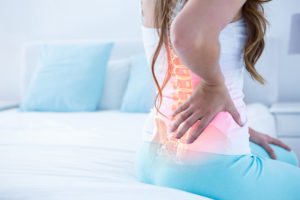
Whether the result of an accident, other injury, surgery or a chronic condition, neck pain can be debilitating. At Directions, we’ll run a comprehensive evaluation of your problem, then design a neck treatment program that addresses your specific needs. Often times, that program will include posture work, manual and massage therapy, joint mobilization and strengthening exercises. For sports enthusiasts, we’ll also create a preventive neck regimen to deter injury recurrence.
Here are some common diagnoses you may have and some tips from Dr. Yanai.
Muscle strain: Too much time hunched over your desk or steering wheel, poor posture, teeth grinding and even reading in bed can cause the neck muscles to tense up.
Worn joints: Like other joints in your body, the ones in your neck can weaken with age causing discomfort and even osteoarthritis.
Nerve compression: Herniated discs or bone spurs in the neck vertebrae can press on nerves branching out from the spinal cord.
Injury: Auto collisions often result in whiplash, which occurs when the head is quickly jerked backward then forward, disturbing the necks’ soft tissues.
Disease: Neck pain is often a symptom of diseases like rheumatoid arthritis, meningitis and cancer.
And more.
At Directions, we’ll start by assessing the following: neck flexibility and mobility, pain between the neck and shoulder blades, numbness or tingling in the shoulders or arms and your overall neck reflexes. We will also check the whole body in relation to the areas of concerns. After that, we’ll design a healing program that will most likely include a combination of manual therapy, stretching and strengthening movements, aerobic conditioning and trigger point exercises to increase power and motion in and around your neck area.
At Directions, we address all back and spine related conditions, including general lower back pain, sports injury, work-related stress and sciatica. Because the back is a complex region and every patient’s back issues are unique, we’re dedicated to creating a program that addresses your individual needs. More often than not, a successful plan will entail several back treatment methods such as manual therapy, spinal mobilization, functional training and massage.
You’ll also receive the added benefit of our back education program, where you’ll learn to protect your back and manage your symptoms while going about your daily activities. In addition, we’ll create a back fitness program you can perform at home to advance the work you began with us.
Sciatica: Sciatica refers to pain, tingling, numbness or weakness that originates in the lower back and travels down the large sciatic nerve in the back of the leg.
Symptoms of sciatica include:
Pain, tingling, numbness or ‘pins and needles’ in one side of the buttock or leg
Leg pain that worsens upon sitting
A sharp pain that makes standing or walking difficult.
Sciatica, it should be noted, is not a diagnosis itself, but rather a symptom of an underlying medical condition such as lumbar herniated disc, degenerative disc disease or spinal stenosis. At Directions, our focus will be determining the root cause of your sciatica, then implementing a personalized treatment plan with manual therapy and stretching/strengthening exercises that will condition the lower back, core and buttock muscles, relieving pain and preventing future discomfort.
Lower back pain: The lower back area is comprised of many elements, including tendons, nerves, muscles, joints and spinal discs. An irritation or irregularity with any of these components can result in chronic pain.
Patients who suffer from lower back pain often experience the following symptoms:
Difficulty walking or standing
Pain that radiates down the legs or spreads to the groin, buttocks and upper thighs
Moderate to severe muscles spasms
Soreness upon touch
Osteoarthritis
Osteoarthritis, the most common type of arthritis, occurs when the protective cartilage at the end of your bones wears down over time. Although it can affect any joint in your body, it occurs more frequently in the hands, knees, hips and spine. Symptoms of osteoarthritis include pain, tenderness, stiffness or loss of flexibility in the joint. Bone spurs, extra bits of bone that feel like hard lumps, may form around the joint as well. Unfortunately, there’s no cure for osteoarthritis. Physical therapy, however, can help alleviate pain and slow downs its symptoms and progression.
And more.
Physical therapy can greatly relieve these symptoms. A carefully designed treatment plan – which may include aerobic conditioning, stretching and strengthening under the supervision of a skilled Directions physical therapist – will mitigate the pain while achieving an even larger goal: building a more resilient lower back system.
(C) Copyright 2023 - Directions Physical Therapy & Acupuncture. All rights reserved.
